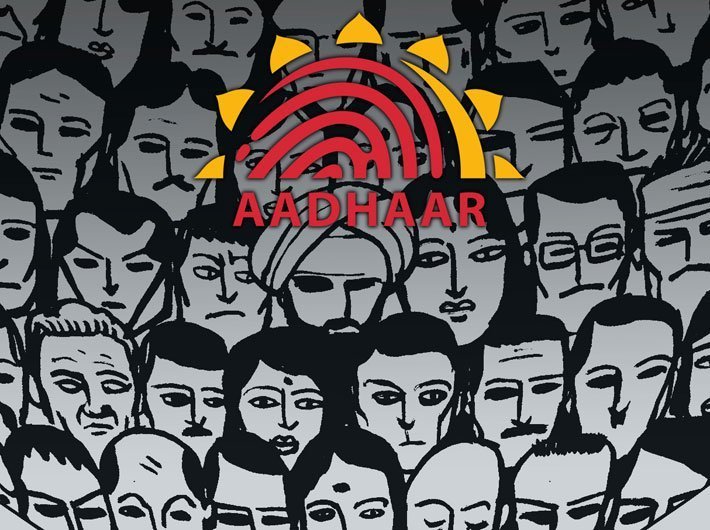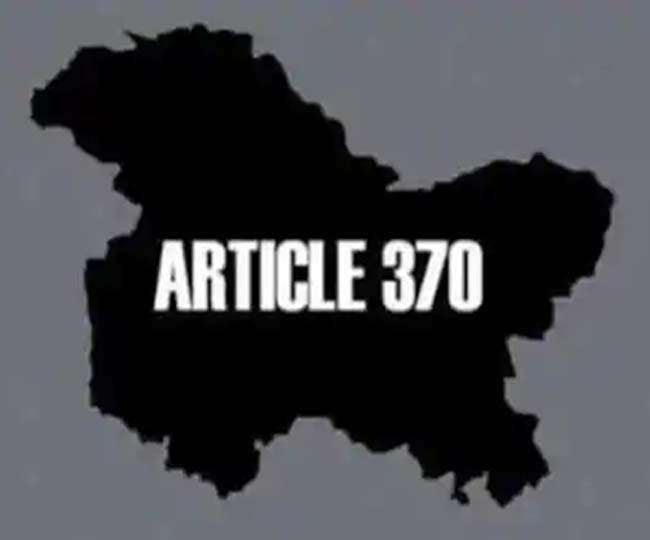The Aadhaar (Targeted Delivery Of Financial And Other Subsidies, Benefits And Services) Act, 2016, or the ‘Aadhaar Act’ for short, started out as a government scheme after the Unique Identification Authority of India (UIDAI) was established on January 28, 2009 by a notification issued by the Planning Commission, and Nandan Nilekani, the co-founder of Infosys, was appointed the head of the project on June 23, 2009. The scheme was intended to provide to every resident of India Unique Identification (UID) numbers linked to the resident’s demographic and biometric information. The Aadhar Cards issued by the government bearing the UID numbers could be used for the purpose of identification. So, the government had launched a scheme to collect the demographic and biometric information of the citizens without any legislative backing, and without disclosing how the information was to be used, who all had access to the information and what were the safeguards, including legal and technological, to protect the information from going into the wrong hands.
On December 3, 2010, The National Identification Authority of India (NIDAI) Bill was introduced in Rajya Sabha and was referred by the Lok Sabha speaker to the Standing Committee on Finance a week later. Nothing came of it, and in November a former Karnataka High Court judge, Justice K. S. Puttaswamy, and a lawyer, Parvesh Khanna, petitioned the Supreme Court by way of Public Interest Litigation (PIL) challenging the implementation of the UID scheme without a supporting legislation. By an Interim Order passed on September 23, 2013, the Supreme Court barred the government from making Aadhaar Card mandatory for any welfare scheme by the government. “No person should suffer for not getting the Aadhaar card in spite of the authority making it mandatory,” the apex court said. At that time, the National Identification Authority of India Bill, 2010 introduced in the Rajya Sabha was still pending, and by 2012 a total of INR 1482 Crore had been spent on the scheme without legislative endorsement, and the figure stood at around INR 8276 Crore by November 2016.
When the NIDAI Bill of 2010 could not obtain the approval of the Parliament, the government took the Money Bill route, and in March 2016 the much needed legislative support was provided to the Aadhaar scheme through the Aadhaar (Targeted Delivery Of Financial And Other Subsidies, Benefits And Services) Act, 2016, which was introduced as a Money Bill despite serious objections by the Rajya Sabha and was practically muscled into an Act with all the changes suggested by the Rajya Sabha rejected, which could very well be done because the upper house of the Parliament has no say in Money Bills. But the Bill in question must actually be a Money Bill, or else it amounts to a fraud on the Constitution, and consequently attracts the Doctrine of Colourable Legislation.
 Article 110 of the Constitution of India defines Money Bill, and starts by stating “a Bill shall be deemed to be a Money Bill if it contains only provisions dealing with all or any of the following matters,” and the matters listed principally relate to, as the name suggests, money and public expenditure, which cover laws pertaining to taxes, custody and management of the Consolidated Fund of India or the Contingency Fund of India, financial obligations of the Government of India, the inflow and outflow of money into and from the Consolidated Fund of India, the audit of the accounts of the Union or of a State and “any matter incidental to any of the matters specified” under Article 110. Quite obviously, the mere fact that a certain scheme or policy or program under a proposed Bill requires funds from the government does not make the bill a Money Bill because the expenditure is incidental to the object of the proposed law, for otherwise an overwhelming number of Bills would be Money Bills.
Article 110 of the Constitution of India defines Money Bill, and starts by stating “a Bill shall be deemed to be a Money Bill if it contains only provisions dealing with all or any of the following matters,” and the matters listed principally relate to, as the name suggests, money and public expenditure, which cover laws pertaining to taxes, custody and management of the Consolidated Fund of India or the Contingency Fund of India, financial obligations of the Government of India, the inflow and outflow of money into and from the Consolidated Fund of India, the audit of the accounts of the Union or of a State and “any matter incidental to any of the matters specified” under Article 110. Quite obviously, the mere fact that a certain scheme or policy or program under a proposed Bill requires funds from the government does not make the bill a Money Bill because the expenditure is incidental to the object of the proposed law, for otherwise an overwhelming number of Bills would be Money Bills.
Article 110 (3) provides, “If any question arises whether a Bill is a Money Bill or not, the decision of the Speaker of the House of the People thereon shall be final.” The position that the decision of the Speaker of Lok Sabha regarding Money Bills is final and is not open to challenge found judicial endorsement in Mohd. Saeed Siddiqui v. State of U.P., Writ Petition (Civil) No. 410 of 2012 and others, decided on April 24, 2014, wherein a three-judge bench of the Supreme Court ruled that the decision of the Speaker of the Legislative Assembly on the question of whether a proposed Bill is a Money Bill or not is final by the mandate of Article 199 (3), which is analogous to Article 110 (3) in respect of the Parliament, and a decision made by the Speaker under Article 199 (3) cannot be challenged for procedural irregularity as per Article 212, which, in turn, is analogous with Article 122 when it comes to the Parliament. “The decision of the Speaker of the Legislative Assembly that the Bill in question was a Money Bill is final and the said decision cannot be disputed nor can the procedure of the State Legislature be questioned by virtue of Article 212. Further, as noted earlier, Article 252 also shows that under the Constitution the matters of procedure do not render invalid an Act to which assent has been given to by the President or the Governor, as the case may be,” the Supreme Court ruled.
In a prior ruling in Raja Ram Pal v. Hon’ble Speaker Lok Sabha, (2007) 3 SCC 184, a Constitution Bench of the Supreme Court comprising five judges, had made a clear distinction between procedural irregularity and substantive illegality or unconstitutionality, and had said that substantive illegality or unconstitutionality has no protection under Article 122. The Raja Ram Pal case was referred to in Mohd. Saeed Siddiqui v. State of U.P as well and the Supreme Court noted: “We are conscious of the fact that in the decision of this Court in Raja Ram Pal vs. Hon’ble Speaker Lok Sabha and Others (2007) 3 SCC 184, it has been held that the proceedings which may be tainted on account of substantive or gross irregularity or unconstitutionality are not protected from judicial scrutiny.”
However, much earlier in 1965 itself a six-judge Constitution Bench of the Supreme Court, in the Presidential Reference In Re Keshav Singh, AIR 1965 SC 745, which was referred to by the Court in the Raja Ram Pal case, had said with reference to Article 212: “If the impugned procedure is illegal and unconstitutional, it would be open to be scrutinised in a court of law, though such scrutiny is prohibited if the complaint against the procedure is no more than this that the procedure was irregular.”
Therefore, even by the judgment in the Mohd. Saeed Siddiqui case the finality of the decision of the Speaker with respect to the Money Bill is beyond challenge only insofar as the challenge relates to the procedural aspects of the decision, but on the grounds of substantive illegality and unconstitutionality such a decision by the speaker is doubtlessly subject to Judicial Review with no protection extended by any part of the Constitution or by the ruling in the Mohd. Saeed Siddiqui case. If Aadhaar Act of 2016 was passed as a Money Bill without actually being a Money Bill in terms of Article 110, it is clearly unconstitutional and liable to be struck down because such a ploy to push a Bill through is by all means a Fraud on the Constitution. Explaining ‘Fraud on Constitution’, which is sometimes used to refer to the circumstances attracting Doctrine of Colourable Legislation, the Supreme Court said in The State Of Bihar v. Kameshwar Singh, 1952 1 SCR 889:
 Expounding the meaning and scope of the Doctrine of Colourable Legislation, a 5-judge Constitution Bench said in K.C. Gajapati Narayana Deo v. The State Of Orissa, AIR 1953 SC 375: “The idea conveyed by the expression is that although apparently a legislature in passing a statute purported to act within the limits of its powers, yet in substance and in reality it transgressed these powers, the transgression being veiled by what appears, on proper examination, to be a mere presence [pretence] or disguise” (possible typographical correction supplied in italics).
Expounding the meaning and scope of the Doctrine of Colourable Legislation, a 5-judge Constitution Bench said in K.C. Gajapati Narayana Deo v. The State Of Orissa, AIR 1953 SC 375: “The idea conveyed by the expression is that although apparently a legislature in passing a statute purported to act within the limits of its powers, yet in substance and in reality it transgressed these powers, the transgression being veiled by what appears, on proper examination, to be a mere presence [pretence] or disguise” (possible typographical correction supplied in italics).
However, it is also well settled that the Doctrine of Colourable Legislation does not concern itself with the intentions behind the legislation in question. Quoting Cooley on ‘Constitutional Limitations’ Vol. I, pp. 379-330, with approval in the K.C. Gajapati Narayana Deo case, the Supreme Court observed: “In dealing with the effect of inquiry into the legislative motive, the question as to whether the statute is constitutional or not, is always a question of power.” The Court further observed quoting from the same source that “…although it has sometimes been urged at the bar that the Courts ought to inquire into the motives of the legislature where fraud and corruption were alleged, and annul their action if the allegation were established, the argument has in no case, been acceded to by the judiciary, and they have never allowed the inquiry to be entered upon.”
So, the issue boils down to whether or not the enactment of the Aadhaar Act as a Money Bill conforms to the parameters set out for a Money Bill under Article 110. If not, the Act is clearly unconstitutional. The Act is under challenge before the Supreme Court, and the government, in response, has taken the position that the decision of the Speaker of Lok Sabha on the issue of Money Bill is final and beyond judicial scrutiny, and that no fundamental rights have been violated, and for that reason there is no cause of action for the challenge.
As for the first argument, the foregoing discussion leaves no doubt that the decision of the Speaker with respect to Money Bill is not beyond judicial scrutiny so long as the ground for challenge is a substantive violation and not procedural anomalies, and the second argument is out because the mere collection of biometric information brings Right to Privacy into the picture.
By virtue of several judicial pronouncements of the Supreme Court, Right to Privacy is an implied Fundamental Rights under Article 21 of the Constitution, and, therefore, cannot be touched without a suitable legislation. While the question whether or not Right to Privacy is a Fundamental Right has been referred to a Constitution Bench by the bench of the Supreme Court hearing the challenge to the Aadhaar Act, and a definitive judicial pronouncement regarding the issue is awaited, it is clear that a legislation that seeks to create a national database of biometric information of the residents of India and has a Right to Privacy angle to it can hardly be enacted into a law through the Money Bill route without severely compromising the constitutionality of the legislation.
Furthermore, when a Bill could not be enacted by the normal legislative process for over five years and was then short-circuited into a law, the surrounding circumstances engender a strong suspicion of Fraud on the Constitution, and also of the deliberate subversion of democratic values, which are at the very heart of parliamentary democracy in India. Is the state trying to impose its will on the people by subverting democratic accountability?
While malafide intent is excluded from the set of parameters to judge the constitutionality of a legislation so long as the exercise of legislative power is consistent with legislative competence, but if the legislative overreach is established, the intent might be looked into by the courts to ascertain the background of the excess so as to determine if it’s a case of borderline breach or a deliberate fraud on the constitution, which might be a relevant distinction because in case of borderline breach with moderate consequences, the court might invoke the Doctrine of the Presumption of Constitutionality to save the legislation, but where it is a purposive breach, the court may find it imperative to junk the legislation to maintain the sanctity of the constitution.
Money Bills do not need the approval of the Rajya Sabha only because they do not impact the substantive rights of the citizens, and are fundamentally about financial accountability of the Executive to the Legislature and are concerned principally with the allocation and management of funds for different governmental schemes and programs, and matters incidental thereto.
The Statement of Object and Reasons to the National Identification Authority Of India Bill, 2010, says that the intended legislation is to “provide for the establishment of the National Identification Authority of India” and to issue the “identification numbers to individuals residing in India” so as to “facilitate access to benefits and services to such individuals to which they are entitled” and the Objects and Reasons for the Aadhar Act indicate that the Act is for “good governance, efficient, transparent, and targeted delivery of subsidies, benefits and services, the expenditure for which is incurred from the Consolidated Fund of India, to individuals residing in India through assigning of unique identity numbers to such individuals and for matters connected therewith or incidental thereto.”
So, the Aadhaar Act of 2016 throws into the 2010 Bill additional words like “good governance, efficient, transparent, and targeted delivery” and, more significantly, underscores that “the expenditure” is “incurred from the Consolidated Fund of India,” which holds true for nearly all central government schemes and programs, and gets enacted as a Money Bill bypassing Rajya Sabha by virtue of nothing but a cosmetic redressing. The eight chapters of the Aadhaar Act, 2016, deal principally with recording, storage and protection of the demographic and biometric information provided by the individuals for the purpose of Aadhar Number/Card, and further provide for the requirement of authentication by Aadhaar Number “as a condition for receipt of a subsidy, benefit or service” provided by the government from the Consolidated Fund of India. The Act also prescribes penalties for unauthorized access to and misuse of individual information recorded and stored under the Act. The Act hardly concerns itself with government finances or taxes, or money in general. What kind of Money Bill has so little to do with money?
The larger and trickier question, however, might be: if a Money Bill has an incidental aspect that encroaches upon one of the substantive rights of the citizens and/or residents, can it be passed as a Money Bill bypassing Rajya Sabha? If the answer is ‘no’, which is quite likely, the Aadhar Act looks pretty pale and rickety in terms of constitutionality.
Published as the Cover Story in the November 2017 issue of Lawyers Update.






